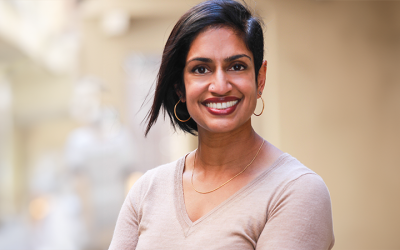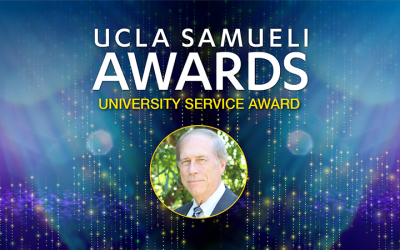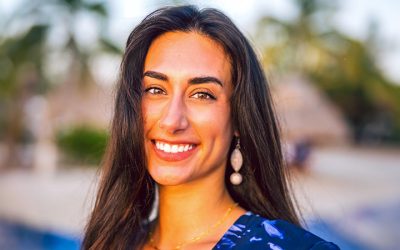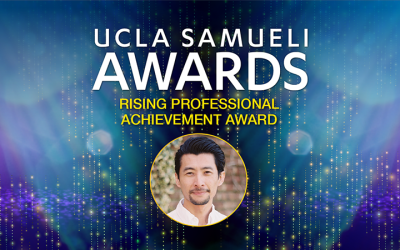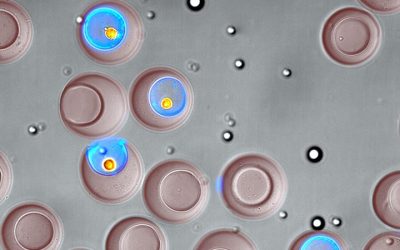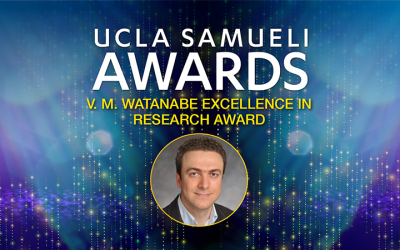
HEADLINES – UCLA Samueli In The News 2011
December
Science
Electrical Energy Storage for the Grid: A Battery of Choices
Bruce Dunn, professor of materials science and holder of the Nippon Sheet Glass Chair, writes an overview of current energy storage technology research and their future directions in the journal Science.
Nature
Quantum information: The conundrum of secure positioning
Quantum information has been suggested as a means to prove beyond doubt a person’s exact spatial position. But it turns out that all attempts to solve this problem using such an approach are doomed to failure. A research group led by computer science professor Rafail Ostrovsky was cited in the article.
Scientific American
The Drone Threat to National Security
The Drone Threat to Privacy
Electrical engineering professor John Villasenor authored a two-part series on unmanned aerial vehicles, or drones.
Los Angeles Times
Idea of civilians using drone aircraft may soon fly with FAA
The Federal Aviation Administration plans to propose new rules for the use of small drones in January, a first step toward clearing the way for police departments, farmers and others to employ the technology. Electrical engineering professor John Villasenor, also a senior fellow at the Brookings Institution’s Center for Technology Innovation, is quoted.
Los Angeles Times
In Los Angeles, it’s back to the future
The city, known for looking forward, has gained a sense of history. Places where artists, architects and engineers influenced the future are being made into monuments and shrines. The recently opened Kleinrock Internet Heritage Site and Archive at UCLA is featured.
New Scientist
Single-molecule nanocar takes its first spin
Made of a single molecule, the “vehicle” has four wheel-like paddles that rotate in the same direction when zapped with a beam of electrons. Paul Weiss, director of the California NanoSystems Institute, who holds a joint appointment in the Materials Science and Engineering Department, was quoted.
The Engineer (U.K)
Scientists use silver nanowires to make LCD screen electrodes
UCLA researchers have developed a new method for producing flexible, transparent electrodes for use in liquid crystal displays and solar cells. Yang Yang, professor of materials science and engineering and the research team’s leader, was quoted.
Encino Patch
Judea Pearl Wins 2011 Harvey Prize
Encino resident Judea Pearl, a computer science professor, has been awarded the 2011 Harvey Prize by the Technion Israel Institute of Technology. The prize “rewards excellence by recognizing breakthroughs in science and technology,” Pearl is being recognized for his pioneering work in knowledge representation and reasoning in computer science.
PhysOrg
Printed CNT transistor circuits may lead to cheaper OLED displays
The article is on the development by UCLA researchers and colleagues of carbon nanotube circuits that can be produced at low cost using an ink-jet printer and which potentially could be incorporated into displays in cell phones, cameras and other devices. Kos Galatsis, associate adjunct professor of materials science at the UCLA Henry Samueli School of Engineering and Applied Science, is quoted.
Daily Bruin
Bruins earn honorable mention in Facebook’s national Camp Hackathon finals
A team of UCLA computer science students and alumni received an honorable mention award at Facebook’s national hacking competition for their photo-sharing app. The UCLA team qualified for the finals after winning the SoCal Camp Hackathon hosted at UCLA in the spring
November
MSNBC
Old machines preserved at “birthplace of the Internet” at UCLA
A photo tour of 3420 Boelter Hall, the Birthplace of the Internet and now home to the Kleinrock Internet Heritage Site, recreating what the lab looked like in 1969. The kickoff event was also featured in L.A. Curbed and on KPCC 89.3.
Fortune
50 Most Powerful Women in Business
2011 Alumni Professional Achievement awardee Joanne Maguire MS ’78, was named one of Fortune’s 50 Most Powerful Women in Business. Maguire is the Executive Vice President for Lockheed Martin Space Systems.
Daily Bruin
GE Cluster course project makes 7 billion population milestone tangible
Keith Stolzenbach, professor of civil and environmental engineering, is using the 7 billion human population mark to teach students about population related issues in his General Education Cluster M1A environment course.
Daily Bruin
UCLA Engineers Without Borders returns to Nicaragua to continue four-year project
It took two full days of traveling by plane, bus, boat and donkey through muddy terrain before UCLA’s Engineers Without Borders project team arrived in a rural Nicaraguan village in June 2010. More than a year later, after preparing passports and itinerary, the team is planning to depart for Nicaragua again.
Daily Bruin
Computer science student Song Zheng shares self-taught skills in programming
Zheng, a fifth-year computer science student, only started programming two years ago. But he is now he is giving lessons at the front of his own student-run course offered by the Association for Computing Machinery at UCLA.
Glendale News-Press
With smart meter naysayers holding court, Glendale brings out the experts
A story on a Nov. 17 forum addressing smart meters organized by Glendale Water & Power includes Rajit Gadh, professor of mechanical and aerospace engineering and director of the UCLA Smart Grid Energy Research Center.
October
New York Times
Coming Soon: The Drone Arms Race
John Villasenor professor of electrical engineering, was quoted in a New York Times article about drone technology.
Daily Bruin
Charging stations installed in response to the growing electric vehicle population in L.A.
Two electric vehicle charging stations were recently installed in Parking Structure 9, in anticipation of increased demand for electric cars in the West Los Angeles area. Rajit Gadh, a professor of engineering, has been driving an electric vehicle for a couple of weeks in conjunction with his research project, which will explore how electrical charging stations will affect the power grid.
Daily Bruin
UCLA researchers combine techniques into new technology to create drinking water from the sea
The team has developed technology called compact modular reverse osmosis technology. The system combines two water technology techniques, ultrafiltration and secondary reverse osmosis, to create 18,000 gallons of drinking water from the sea per day.
Daily Bruin
UCLA engineering students launch networking site Hyphos
Engineering students launch Hyphos, where users find each other through interests and information. The site, called Hyphos, differs from other social networking websites such as Facebook, Twitter and Google because users find others through personal interests and information, rather than the other way around.
Daily Telegraph (U.K.)
Vint Cerf: the internet is going into space
Shane Richmond meets one of the internet’s founding fathers, Vint Cerf, who talks about the importance of curiosity and how the internet is going into space.
UCLA Today
Flash mob helps Bruin pop the question
Trang Vu and her boyfriend came to UCLA to visit their alma mater last Saturday when suddenly a flash mob of about 200 people in Bruin Plaza spontaneously joined a choreographed dance.
Laser Focus World
PV polarizer technology lets cell phones charge themselves
An engineering team at the University of California–Los Angeles (UCLA) Henry Samueli School of Engineering and Applied Science has developed a polarizing organic photovoltaic (PV) layer for liquid-crystal displays (LCDs) that simultaneously acts as a polarizer and a PV device.
The Daily Campus
New networking website debuts at UConn, UCLA
Hyphos distinguishes itself from the other social networking sites and social media by encouraging users to meet new people. According to the Hyphos press page, while websites such as Facebook and Google+ help users build networks around existing relationships such as friends and family, Hyphos instead focuses on establishing new relationships with other users based on common groups and interests.
WHYY-FM (Philadelphia public radio)
Rutgers professors win $2 million to help ease your morning commute
The work is a joint project with UCLA computer scientists.
MyCentralJersey.com
Rutgers shares $2M grant to develop ‘intelligent’ technology
The Web site of two regional Gannett papers, the Home News Tribune and the Courier-News, carried a story on Rutgers and UCLA sharing a $2 million grant to develop ‘intelligent’ technology.
September
National Public Radio
Solar-Charged Phones Without A 93-Million-Mile Cord
Researchers have found a way for LCD screens to charge using solar power, indoor light and the devices’ own backlight. That means in a few years, you may be able to recharge your phone by pointing it toward the sun instead of plugging it into the wall. Guest host John Ydstie talks to the lead UCLA researcher, Yang Yang. The news was also carried in E-Week Europe.
Technology Review
The First Fully Stretchable OLED
Stretchable electronics promise video displays that could be rolled up and tucked into a shirt pocket, or cell phones that could swell or shrink. Electronic sheets that could be draped like cloth would be a boon for robotic skin and embedded medical devices. Now engineers at UCLA have taken a step toward these handy electronics by creating the first fully stretchable organic light-emitting diode (OLED). The news was also featured in CNET and CRN.
Technology Review
Flash Memory That’ll Keep On Shrinking
Researchers at the University of California, Los Angeles, and one of the largest manufacturers of computer memory, Samsung, have created a new kind of flash memory that uses graphene—atom-thick sheets of pure carbon—along with silicon to store information.
BBC News
Portable microscope detects bacteria using hologram
A cheap holographic microscope capable of detecting E. coli and other bacteria has been developed by UCLA researchers. The handheld device uses a laser instead of lenses to identify bugs in water, food or blood, and costs less than $100. The The news was also reported in International Business Times, and Medgadget.
BBC News
Southwest blackouts: How do power outages spread?
A blackout leaves five million without power in Southern California and parts of Mexico overnight. How does this happen? Rajit Gadh, professor of mechanical and aerospace engineering, and director of the UCLA Smart Grid Energy Research Center (SMERC), is quoted.
Contra Costa Times
UCLA researchers shake model levee, for peat’s sake
In the first experiment of its kind, UCLA engineers erected a shaking machine atop a model levee about the size of a two-car garage. Their goal: find out if the peat soil on Sherman Island would rupture, causing the “levee” to fail.
Space Daily
Researchers use tiny gold particles to boost organic solar cell efficiency
UCLA researchers and their international colleagues have shown that by incorporating gold nanoparticles into organic photovoltaics, they can significantly improve the cells’ power conversion. The news was also reported inR&D Magazine.
PhysOrg
Study shows that vehicle-to-vehicle navigation systems really do work
Now a new study shows that navigation systems in which vehicles collect and share traffic information with each other can decrease the average travel time of all vehicles in a traffic network. UCLA computer scientists are co-leaders on the research along with colleagues from the University of Cambridge and the University of Bologna.
Daily Bruin
Diagnosis in the palm of your hand: Professor Aydogan Ozcan creates $5 cytometer
You might be looking at Facebook on your mobile device, but Professor Aydogan Ozcan wants to use your cell phone to look at your cells. Ozcan is a bioengineer who likes to make medical equipment small and affordable. Once, he invented a lenseless microscope you could attach to your phone. Ozcan was also featured on the Science Coalition’s YouTube channel
Daily Bruin
Demolition begins on Engineering 1A building
Demolition on UCLA’s Engineering 1A building began last month, with a wrecking ball swinging into the building and exposing pillars and chunks of concrete.
August
National Geographic
Could Seawater Solve the Freshwater Crisis?
Chemical and biomolecular engineering professor Yoram Cohen is quoted in the story on desalination issues.
National Public Radio, Weekend Edition
What Will We Watch As Drones Evolve?
Electrical engineering professor John Villasenor is quoted in the story on the development of unmanned military drones and issues related to national security. Villasenor was recently appointed as a fellow of the Brookings Institution.
New Scientist
Grappling hooks help bacteria slingshot forward
Like tiny mountaineers, bacteria use grappling hooks to pull themselves across a surface – and can get an extra boost by releasing one of the taut lines to slingshot themselves forward. Thwarting them could help combat the biofilms behind hospital infections.
Also carrried in MotherBoard, and Britain’s Observer (print edition).
LA Weekly
A Raver’s Dreamwear: UCLA Invents Stretchy, Glowing Devices ‘That Can Move With Body’
The Los Angeles alternative weekly suggests a recent UCLA Engineering invention of stretchable polymer light-emitting devices could also be incorporated into dance fashion.
KPCC 89.3 The Madeline Brand Show
Beginning of the Internet commemorated in new UCLA museum
Visitors to the Kleinrock Internet Heritage Site and Archive will be able to see the original IMP that transmitted the message back in 1969 and a period-appropriate slideshow about how ARPANET worked, along with vintage teletype machines, desks, chairs, pens and staplers from 1969 UCLA classrooms. Even the walls have been painted the exact same shade of institutional minty green they were in former years.
KPCC 89.3 Patt Morrison
Computer-brain: biology inspires binary
Computer science professor Richard Korf, an expert in artificial intelligence, is featured in a story on how biology will influence the future of computers.
Mobile Health News
White-label tablets tapped for home health
Computer science professor Majid Sarrafzadeh, a co-director at UCLA’s Wireless Health Institute, is quoted in this article on the use of tablet computers in health care.
July
Technology Review
Mobile Health Apps That Share
A new wafer pruning technique could save 15 percent in semiconductor chip manufacturing costs and increase profits per chip by as much as 12 percent, according to the Semiconductor Research Corp., which funded development of the technique at the University of California at Los Angeles (UCLA).
Los Angeles Times
Patt Morrison Asks: Albert Carnesale, Professor Nuclear
An Op-Ed section Q&A features Chancellor Emeritus Albert Carnesale, professor of mechanical and aerospace engineering. He is serving on the Blue Ribbon Commission on America’s Nuclear Future, which presents its draft report to President Obama at the end of this month.
BBC News
E. coli: Are the bacteria friend or foe?
The story on E. coli bacteria’s many uses included the work of James Liao, Chancellor’s Professor of Chemical and Biomolecular Engineering, and his team. They recently developed a way to produce normal butanol fuel using the bacteria. Some consider butanol to be a greener alternative to gasoline and other widely used fuels.
Mashable
How Mobile Phones Are Saving Lives in the Developing World
The news site reported on the development by Aydogan Ozcan, associate professor of electrical engineering, and colleagues of a lens-free imaging technique that can transform cell phones into microscopes for use in global health care. Ozcan was quoted in the article.
June
EE Times
IBM to test wafer pruning
A new wafer pruning technique could save 15 percent in semiconductor chip manufacturing costs and increase profits per chip by as much as 12 percent, according to the Semiconductor Research Corp., which funded development of the technique at the University of California at Los Angeles (UCLA).
The Daily Bruin
Professor Yang Yang and his team of student researchers develop plastic solar cells
While most solar panels are made from silicon, which increases manufacturing costs, Yang and his researchers focus on developing solar cells from organic photovoltaic technology, which uses plastic in place of metal. This UCLA technology is now used by Solarmer, a solar energy company that houses a number of Yang’s research group.
UCLA Today
Farms and geo-mapping: staff, students develop sustainability plans
UCLA is about to pursue a combination of projects that range from high-tech, geo-tagged databases to literally back-to-the-farm ideas, thanks to teamwork between staff and students. One team worked with the Center for Embedded Networked Sensing (CENS)
May
U.S. News
Cell Phones as Community Observers
Sometime in the near future, citizens who want to become involved in tracking issues that personally affect them—neighborhood environmental changes, for example, or their own health behaviors—need only carry a cell phone.
Daily Bruin
UCLA researchers help to improve the Internet’s infrastructure for speed and security
A squad of UCLA researchers is working to make the Internet speedier and more secure by changing its fundamental structure.
Brookings Institution: Issues in Technology Innovation
Ensuring Hardware Cybersecurity
Electrical engineering professor John D. Villasenor authored a paper on the issues of large-scale hardware security as well as approaches to the problems.
Big Think
The Coming Wireless Health Revolution
Aydogan Ozcan, assistant professor of electrical engineering has ambitious ideas for using cell phones to help solve global health challenges. Also, Ozcan’s work on cell phone microscope was featured in R&D Magazine.
Los Angeles Times
Bin Laden raid reveals another elusive target: a stealth helicopter
An article about the advanced helicopter that was destroyed during the U.S. special forces raid that killed Osama bin Laden included quotes from mechanical and aerospace engineering associate professor Jeff Eldredge, an expert in acoustics.
Computer World
Living Legend: Vint Cerf on the Internet and out-of-this-world communications
The magazine profiles UCLA alumnus Vint Cerf, Google’s Chief Internet Evangelist, including his pioneering work on the Internet, and the near-future InterPlanetary Internet.
Daily Bruin
App from UCLA team prevails in Facebook’s first SoCal Camp Hackathon
A team of UCLA computer science students took first place in Facebook’s first Southern California hack-a-thon, with their shared-canvas video conferencing and drawing app.
April
New York Times
Paul Baran, Internet Pioneer, Dies at 84
Paul Baran, an engineer who helped create the technical underpinnings for the ARPANET, the government-sponsored precursor to today’s Internet, died Saturday night at his home in Palo Alto, Calif. He was 84. Computer science professors Gerald Estrin and Leonard Kleinrock were quoted.
Also in the: Los Angeles Times; San Jose Mercury News; National Public Radio; The Guardian (U.K.); and BBC News.
San Jose Mercury News
Internet pioneer Paul Baran showed Silicon Valley how to do business
A Mercury News columnist recalls Paul Baran, the entrepreneur, thinker, and team-builder, who even with all his successes, always had a modest and humble nature.
Also in Forbes.
Thompson Reuters
Hottest Research of 2010
The review of some of the world’s most cited scientific researchers highlights Yang Yang, professor of materials science and engineering, whose research focuses on making alternative energy technologies, including solar cells, more efficient and commercially viable.
New York Times
Keeping Tabs on the Infrastructure, Wirelessly
Civil and environmental engineering professor Wallace is featured in the article on wireless systems that can help protect the nation’s infrastructure.
Wallace was also interviewed on Fox News’ Hannity show on potential natural disasters.
National Public Radio: Talk of the Nation
The Most Effective Ways To Prepare For Disaster
Professor Wallace is a featured guest on the national show. He discussed current issues in seismic protection, following the Japan magnitude 9.0 earthquake last month.
KNBC-4
News Conference: UCLA Professor Ivan Catton (video).
In an eight-minute segment, KNBC-4 anchor Ted Chen interviews mechanical and aerospace engineering professor Ivan Catton, a distinguished nuclear engineer; following the ongoing crises at nuclear power plants in Japan damaged by the recent earthquake and tsunami.
Voice of America
Pumps from US to Help Japan’s Damaged Nuclear Plant
Two giant pumps normally used for concrete in construction projects will soon be used to help cool nuclear reactors in Japan. Professor Catton is quoted.
Bloomberg Businessweek
Time for Tough Calls on Nuclear Power Plants
The article covers the debate on the safety of nuclear power plants and their future in energy generation. Professor emeritus David Okrent, a distinguished nuclear engineer, is quoted.
MSNBC
Why a Computer can’t cut it as a stand-up comic
Computer science professor Judea Pearl, a pioneer in artificial intelligence, was quoted on research on the human mind and artificial intelligence. The article follows the news of an IBM computer winning the game show “Jeopardy!”
Technology Review
Bug Creates Butanol Directly from Cellulose
James Liao, a biomolecular engineer at the University of California, Los Angeles, has developed two routes to liberate butanol from its dependence on food crops.
Environmental News Network
Transgenic Microbe Converts Cellulose to Isobutanol Fuel
The site reports on studies led by UCLA Engineering researchers demonstrating that non-food proteins can be used as a raw material for biofuel production and that isobutanol can be produced directly from cellulose. Professor Liao and UCLA Engineering Dean Vijay Dhir were quoted. UCLA Engineering researcher Wendy Higashide was cited.
CBS News
Scientists: If aliens arrive, expect robots
An article in CBS’ Tech News Daily about the possibility of extraterrestrials arriving on Earth features commentary by computer science professor Michael Dyer suggesting that such visitors would likely be synthetic, robotic entities that had supplanted their biological creators.|
Wired
Turn Your Cellphone Into a High-Powered Scientific Microscope
Aydogan Ozcan, UCLA assistant professor of electrical engineering, was quoted in an article about researchers turning an iPhone into a microscope.
Daily Bruin
Op-Ed: People should not be afraid of using nuclear energy
Frank Chen, professor emeritus of electrical engineering, writes in a Daily Bruin opinion piece that despite the ongoing situation at nuclear reactors in Japan, nuclear power is still critical to the energy future of the world and highlights some recent advances and future areas of research.
The Daily Bruin
Small Nucelar Reactor Shut Down
The Daily Bruin reviews the history of a small nuclear reactor that was at UCLA Engineering from the late 1950s until 1984. Dean Dhir and Professor Catton are quoted.
The Daily Bruin
Browsing History
A heritage site is being set up in Boelter Hall 3420, the room the first Internet message originated in.
March
MSNBC
Race for Better Biofuels Heats Up
Scientists who engineer microbes to efficiently produce biofuels from plants and algae are busy reporting breakthroughs that could wean us from fossil fuels — offering a glimmer of hope to consumers eyeing gas prices skyrocket. James C. Liao, Chancellor’s Professor of Chemical and Biomolecular Engineering, is featured. The news was also featured in: Fast Company, Forbes, RedOrbit, and China’s Xinhua News Agency.
CNN
The ‘killer app’ that could help save lives
“Killer apps,” so the technological jargon goes, can transform the fortunes of businesses while improving the lives of the people that use them. But very few can claim to improve the worldwide provision of healthcare. UCLA’s Aydogan Ozcan is confident his lens-free cell phone microscope can do just that.
RedOrbit
Boiling Bubbles Are Cool In Space
It may seem illogical, but boiling is a very efficient way to cool engineering components and systems used in the extreme environments of space. An experiment to gain a basic understanding of this phenomena launched to the International Space Station on space shuttle Discovery Feb. 24. The Nucleate Pool Boiling Experiment, or NPBX, is one of two experiments in the new Boiling eXperiment Facility, or BXF.
Daily Bruin
UCLA researchers send an experiment into orbit onboard Space Shuttle Discovery to investigate possible engine-cooling technology
On its last mission on Thursday, Space Shuttle Discovery flew the first UCLA-led research project into space. The experiment, which will be carried out remotely on the International Space Station, may be the first step towards long, manned space journeys.
The news was also featured in the Los Angeles Daily News.
Daily Bruin
Raytheon funds research in public safety communications
In a country that prides itself on being at the forefront of new technology, it is a wonder that police officers, firefighters and paramedics still largely rely on the good old-fashioned walkie-talkie.
To fix this, Raytheon Company and the UCLA Henry Samueli School of Engineering and Applied Science have partnered to create the UCLA Center for Public Safety and Network Systems.
The Guardian (U.K.)
Blizzard at 20: ready to think about console development?
Blizzard Entertainment co-founders and UCLA Engineering alumni Mike Morhaime ’90 and Frank Pearce ’90 talk about the history and future of the company on its 20th anniversary.
Christian Science Monitor
IBM’s Watson: Can a computer outsmart a Jeopardy! braniac?
The article on IBM’s trivia game show-playing computer includes comments from UCLA computer science professors Michael Dyer and Richard Korf, both experts in artificial intelligence.
Daily Breeze
Raytheon picks Downey for new tech center
An article on the Raytheon Co. referenced an agreement between the company and the UCLA Henry Samueli School of Engineering and Applied Science to work together to establish a center for public safety network systems.The news was also carried in the Worchester Business Journal.
CBS2
Teaching for Free
Two UCLA computer science professors are teaching for free to help the department with budget cuts.
Bioscholar
Study may lead to next-gen nanoelectronic and spintronic devices
The news outlet reported on a study in which researchers from UCLA’s Henry Samueli School of Engineering and Applied Science and colleagues demonstrated that they could control electrical conduction and surface states in topological insulator nanoribbons. Kang L. Wang, the Raytheon Professor of Electrical Engineering at UCLA, was quoted. The news was also reported in TechEye and in SiFy News.
Public Works Magazine
Top 10 Trendsetters for 2010
Shaily Mahendra and her co-authors on a paper on nanomaterials used in the construction industry were selected as one of 10 trendsetters by Public Works magazine. Their paper, available here, was the #1-viewed article over a 12-month period at the journal ACS Nano.
UCLA News Week
A research project that is now aboard the International Space Station is one of the features in the Feb. 23 edition of the UCLA News Week video feature. To view it, click here.
February
The Daily Breeze
Raytheon to donate $1 million to UCLA for public safety research
Raytheon Co. will donate $1 million over three years to UCLA for research in the areas of public safety networks, the company said Monday. The money will go to establish the UCLA Center for Public Safety Network Systems. The donation will be an initial contribution, the military contractor said.
Genetic Engineering and Biotechnology News
Animal-Free Culture System for Single-Cell Passaging of hESCs Developed
Scientists at the University of California, Los Angeles have developed what they claim is a fully chemically defined, animal-free alternative to standard mouse feeder cell- and bovine sera-containing culture systems for human embryonic stem cells (hESCs).
Daily Bruin
UCLA scientists develop a new cell-culture system that allows for much more precise research
UCLA researchers discovered a new method for maintaining and replicating human embryonic stem cells that solves multiple problems plaguing research in the field and its medical applications.
Daily Bruin
Two UCLA computer science professors teach classes without pay
One academic department at UCLA has found an unusual luxury to help it weather budget cuts: professors teaching for free. For the past two years, Carey Nachenberg and Giovanni Pau of the computer science department have been teaching one class a year without salary.
Innovation Trail
Battery facility could lead to a greener grid
A consortium Web site of several New York state public radio and television stations interviewed Rajit Gadh, professor of mechanical and aerospace engineering and director of the Smart Grid Energy Research Center on the future of the nation’s electrical grid as part of a story on an energy storage facility in upstate New York.
UCLA News Week
UCLA’s video news highlights feature for the week of January 26 includes work by a team of UCLA engineers and scientists on creating and maintaining better supplies for stem cell lines.
To watch it, click here.
January
Daily Bruin
Technical Entrepreneurial Community makes scientific dreams commercialized realities
Specifically aimed at engineers, TEC guides students through the process of building a startup company from the inception of a technical idea to protecting that idea with a patent and acquiring financial support from investors.
IEEE Spectrum
DARPA funds spintronic and nanomagnet research teams to create low-power nonvolatile logic
The U.S. Defense Advanced Research Projects Agency (DARPA) wants a new type of computer logic. It will rely on magnetism instead of electricity to do its job, and its developers say this difference could one day allow computers to run on a fraction of the energy now required.
Scientific American
Could a network of cell phones improve air pollution monitoring?
Nithya Ramanathan, an assistant researcher at UCLA Engineering is part of a team that has developed a system that relies on cell phones to report concentrations of black carbon, a particle produced by burning fossil fuels and biofuels like wood and dung.
UCLA News this Week
The January 5 edition of the weekly news summary includes flexible transparent electrodes developed by Qibing Pei and news on UCLA joining in the Southern California Marine Institute, in which Keith Stolzenbach played a key role. To view it on YouTube, click here.
News
UCLA Civil and Environmental Engineer Heads LA County’s Chief Sustainability Office
For Rita Kampalath M.S. ’05, Ph.D. ’10, every day is Earth Day as the Los Angeles County’s chief sustainability officer. But when she first came to UCLA as a graduate student
UCLA Samueli Announces 2024 University Service Award
Every year, the UCLA Samueli School of Engineering selects and recognizes outstanding achievements by a number of its alumni, faculty members and students who have excelled in various fields.
Bruin Engineer Makes Waves Researching Microplastics in LA River
Jamie Leonard ’20, M.S. ’21 started working to mitigate plastic pollution in high school, taking part in an initiative to replace her school’s plastic water bottles with metal ones. Now a UCLA Ph.D. student, she has her eye on microplastics
UCLA Samueli Announces 2024 Rising Professional Achievement Award
Every year, the UCLA Samueli School of Engineering selects and recognizes outstanding achievements by a number of its alumni, faculty members and students who have excelled in various fields.
Advance in Immune Cell Screening Uncovers Receptors that Target Prostate Cancer
A recent UCLA study demonstrates a new process for screening T cells, part of the body’s natural defenses, for characteristics vital to the success of cell-based treatments.
UCLA Samueli Announces 2024 Excellence in Research Award
Every year, the UCLA Samueli School of Engineering selects and recognizes outstanding achievements by a number of its alumni, faculty members and students who have excelled in various fields.

